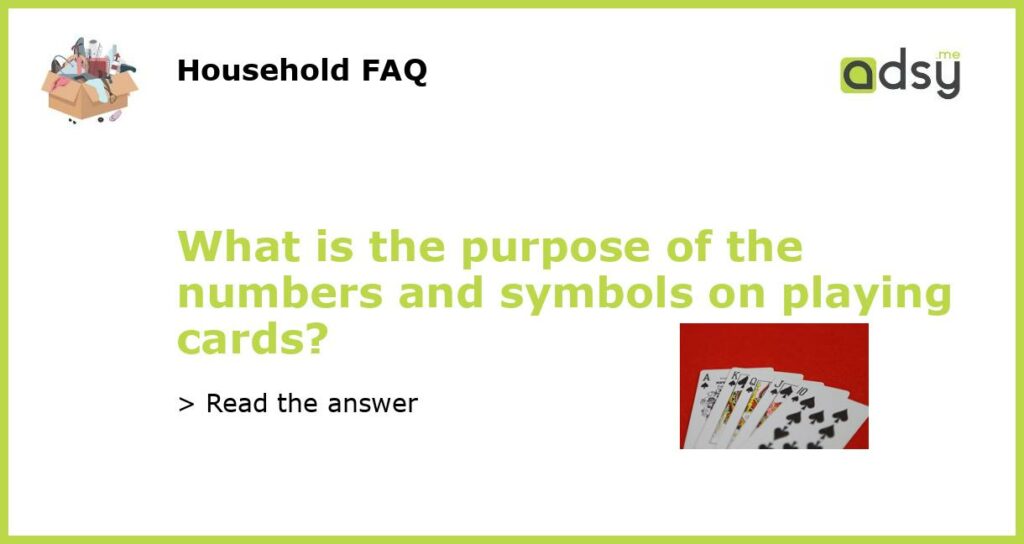What is the purpose of the numbers and symbols on playing cards?
Playing cards have been around for centuries and are used in various games and forms of entertainment. Each card has a unique combination of numbers and symbols, but have you ever wondered what the purpose of these designs is? In this article, we will explore the significance of the numbers and symbols on playing cards and why they are a crucial part of the overall gaming experience.
Designating Card Rank and Value
One of the primary functions of the numbers and symbols on playing cards is to designate the rank and value of each card. Each suit (hearts, diamonds, clubs, and spades) has its symbols, and the numbers or face cards determine the value of each card within the suit. For example, the Ace represents a value of one, while the King, Queen, and Jack have higher values. This system allows players to easily identify the worth of their cards and compare them to others in the game.
Facilitating Gameplay and Strategy
The numbers and symbols on playing cards also play a crucial role in facilitating gameplay and strategy. The different combinations of numbers and symbols allow for a variety of game mechanics, such as creating sets or sequences. For example, in games like Poker, players need to form specific combinations of cards with matching numbers or symbols to win the round. The designations on the cards help players strategize their moves and make informed decisions during gameplay.
Enhancing Accessibility and Inclusivity
Another purpose of the numbers and symbols on playing cards is to enhance accessibility and inclusivity in gaming. The use of universal symbols and numbers allows individuals from different cultures and languages to participate in card games without language barriers. The symbols transcend language barriers and provide a common visual representation of the cards’ values, making them accessible to a wider range of players.
Maintaining Tradition and Aesthetic Appeal
Playing cards have a rich history dating back centuries, and the use of numbers and symbols on cards is deeply rooted in tradition. The traditional card designs have become iconic and instantly recognizable, adding to the aesthetic appeal of playing cards. Whether it’s the elegant spades, the regal diamonds, the passionate hearts, or the versatile clubs, the symbols on playing cards have become an integral part of their design and overall appeal.
Establishing a Standardized System
The numbers and symbols on playing cards also serve the purpose of establishing a standardized system across different games and regions. By having a common set of symbols and numbers, players can easily switch between various card games without having to learn a completely new set of rules or symbols. This standardization makes it easier for players to learn and play different card games, regardless of their skill level or familiarity with specific games.






